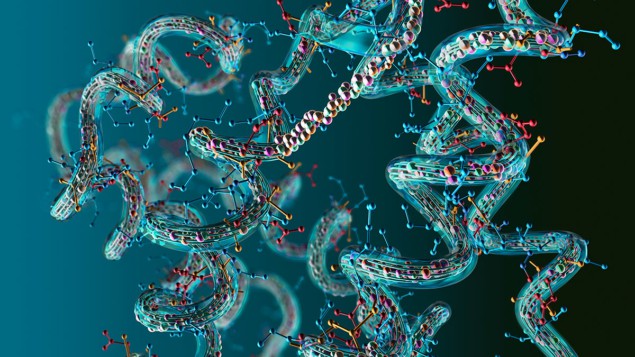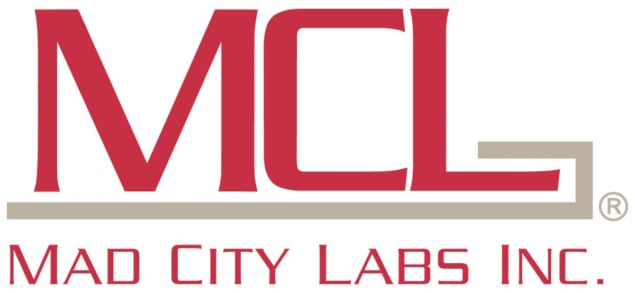The Biophysical Society Annual Meeting enables scientists from different backgrounds to discuss the emerging techniques now being used to probe dynamic processes inside the body

The 67th Annual Meeting of the Biophysical Society aims to provide a dynamic forum for researchers who are working at the interface between the life, physical and computational sciences. Running from 18 to 22 February in San Diego, US, the meeting offers a valuable opportunity for attendees to share their latest research findings while also learning about the emerging techniques and applications being developed by scientists from all over the world.
“The last few years represent an epochal moment for science in human history,” comment programme chairs Baron Chanda and Janice Robertson, both from Washington University in St Louis. “Basic science discoveries were translated into treatments for human diseases at an astonishing pace, and advances in biophysics at various levels has been central to these developments.”
The conference, which is expected to attract upwards of 5000 delegates, combines technical symposia and interactive daily poster presentations with programmes focusing on career development, education and science policy. “This meeting will showcase incredible breakthroughs in new drug developments and protein structure prediction,” continue Chanda and Robertson. “Other symposia will highlight the emerging complexity of cellular membranes, RNA and genomic organization.”
Scientific workshops during the event will feature developments in computational drug discovery, and spectroscopic and microscopy approaches for high-throughput research. The Saturday Subgroup symposia enable attendees to meet within their scientific communities, while social activities throughout the event allow more informal networking with friends and colleagues.
Meanwhile, the technical exhibit offers an opportunity for delegates to explore the latest innovations in equipment and techniques. Some of the vendors are also hosting presentations to explain how their solutions can be used for biophysical studies – read on to find out more.
Precision instruments enable biophysical research
For 25 years Mad City Labs has provided precision instrumentation for biophysicists, including nanopositioning systems, micropositioners, atomic force microscopes (AFMs) and RM21 single-molecule microscopes. For a start, the company’s piezo nanopositioners feature PicoQ sensors, which combine ultralow noise with high stability to yield sub-nanometre precision. Their stability makes them ideal for biophysics and microscopy applications, and they also provide the ideal building blocks for nanoscopy when paired with the company’s micropositioners.

AFMs from Mad City Labs achieve atomic-step resolution while also being affordable and fully customizable with automated software and calibration, and for full flexibility all of the company’s nanopositioners and micropositioners are compatible with its AFM instruments. Meanwhile, the RM21 single-molecule microscope offers high stability, precision alignment and direct access to the optical pathway, plus they can be used with nanopositioners to enable advanced nanoscopy methods.
Also available is the MicroMirror total internal reflection fluorescence (TIRF) microscope, a multi-colour instrument that combines an excellent signal-to-noise ratio with efficient data collection. An array of options are available to enable the microscope to be used for different single-molecule techniques. A further addition to the company’s product range is the Mad-Deck XYZ stage, an automated stage platform that is ideal for Interferometric scattering microscopy.
During the Biophysical Society meeting Mad City Labs will host a presentation to showcase research that has been enabled by the company’s microscopy solutions. “Open & Flexible Microscopy Systems for Combined Single Molecule Methods” will run on Sunday 19th February, 1:30 – 3:00 pm, and will feature three talks by leading academics:
- “Quantification of Lipid Diffusion Dynamics on Live Cell Membranes through Interferometric Scattering Microscopy” by Francesco Reina of the Leibniz Institute for Photonic Technologies and the Friedrich Schiller University Jena, Germany
- “A Single-Molecule View on Dynamic Chromatin Access of Epigenetic Regulatory Factors” by Beat Fierz at the École Polytechnique Fédérale de Lausanne, Switzerland
- “Magnetic Tweezers Investigations of the Type 1A Topoisomerase of Mycobacterium Smegmatis” by Maria Mills at the University of Missouri, US
More details and full abstracts are available online.
- Find out more by visiting Mad City Labs at booth 508
Confocal microscope simplifies time-resolved imaging
Quantitative time-resolved fluorescence techniques such as fluorescence-lifetime imaging microscopy (FLIM) are increasingly being used in cell biology to monitor processes such as phase separation, conformational changes, and the interactions between proteins. So far, however, expert knowledge has been needed to obtain accurate and reproducible results from these tools, which has slowed down their widespread adoption.

PicoQuant’s new Luminosa confocal microscope overcomes that challenge by combining state-of-the-art hardware with cutting-edge software to deliver high-quality data while also simplifying daily operation. The software includes context-based workflows to improve the reproducibility of experiments, while features such as sample-free auto-alignment and calibration of the excitation laser power make experiments more efficient. At the same time, every optomechanical component is fully accessible to enable the development of new methods.
Application specialists Marcelle König and Evangelos Sisamakis will present two use cases during the meeting. First, they will show how the instrument can make it easier for researchers to use single-molecule fluorescence resonance energy transfer (smFRET) in their experimental studies. For example, the FRET efficiency and stoichiometry can be calculated during the experiment, corrected according to standard protocols, and displayed in real time.
Second, they will describe how Luminosa can be used to streamline FLIM experiments. The instrument’s rapidFLIM module can record images at several frames per second with high photon-count rates, which the software handles with a novel dynamic binning format to enable high-speed automated analysis of FLIM images. Join their talk on Sunday 19 February, 12:30 – 2:00 pm, in Room 10.
- For a live demonstration of the Luminosa confocal microscope, and to find out about other innovations from PicoQuant, visit booth 309.



